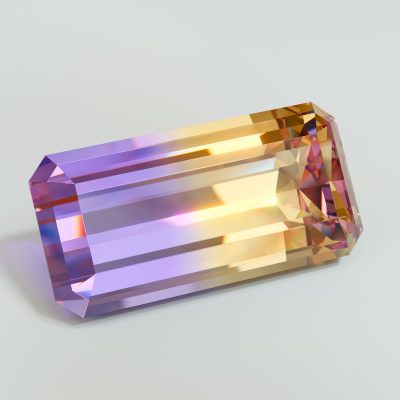
Ametrine is a variety of quartz consisting of both amethyst and citrine with zones of both purple and yellow. Most naturally occurring ametrine comes from Bolivia, with some from India and Brazil.
Shortly after appearing on the enthusiastic exchange, a demonstration showing ametrine could be induced by heating and irradiation killed the burgeoning market. Interestingly enough, time and reasoning demonstrate that the treatment of rough amethyst to achieve the bi-color gemstone is financially unfeasible. Bolivian examples of natural ametrine continue to reach the market. Other gemstones that have undergone heating or irradiation are found in most jewelry stores today. The resistance to the same treatment to achieve ametrine seems misplaced. Another issue stalling the gem’s popularity was the golden citrine color. Traditionally, a more cognac-like color was considered desirable for citrine. Time and taste have changed and the beautiful balance of golden and purple hues is viewed as an exciting combination. The material now lends itself to wonderful examples of fanciful cutting and sculpting.
Sources
- Federman, David. Gem Profile/2: The Second Sixty. Shawnee Mission, KS: Modern Jeweler, A Vance Corporation Publication, 1992